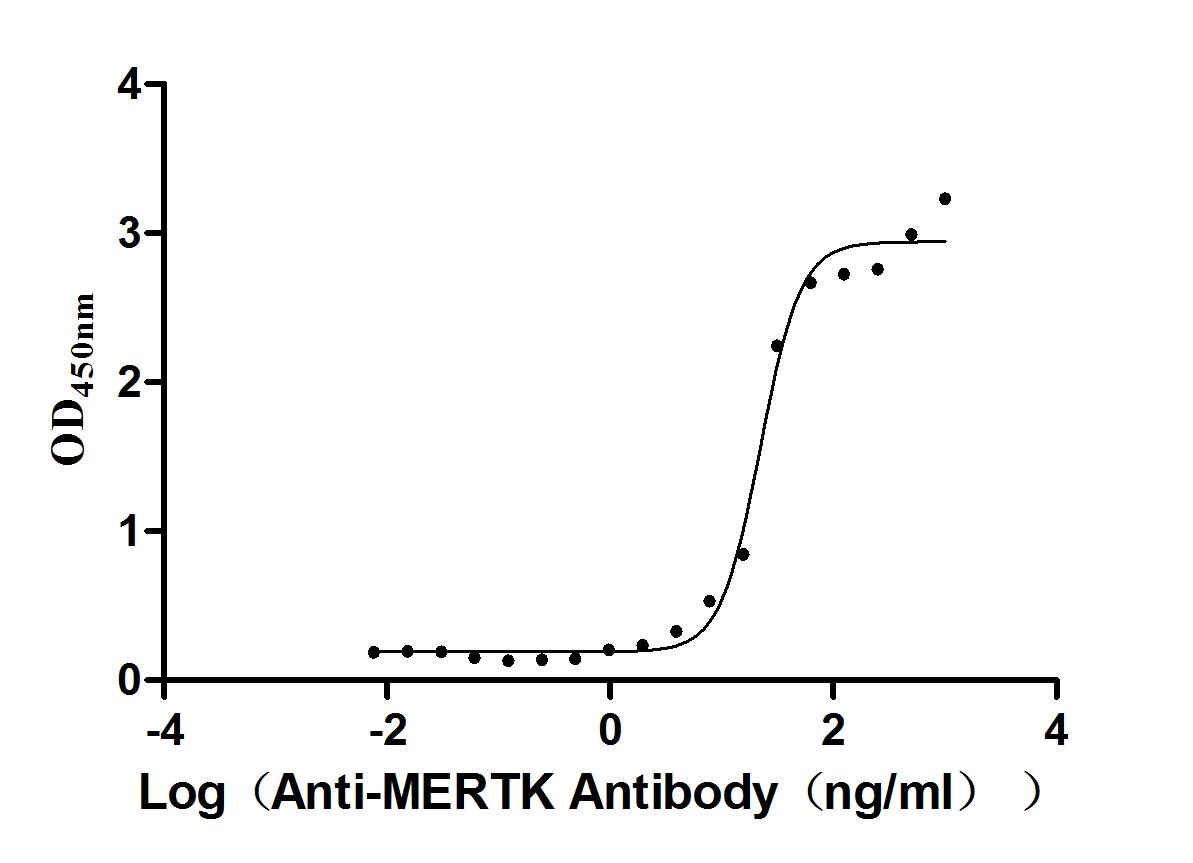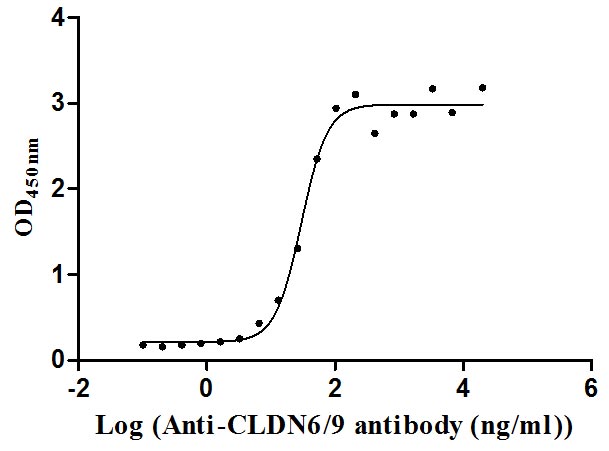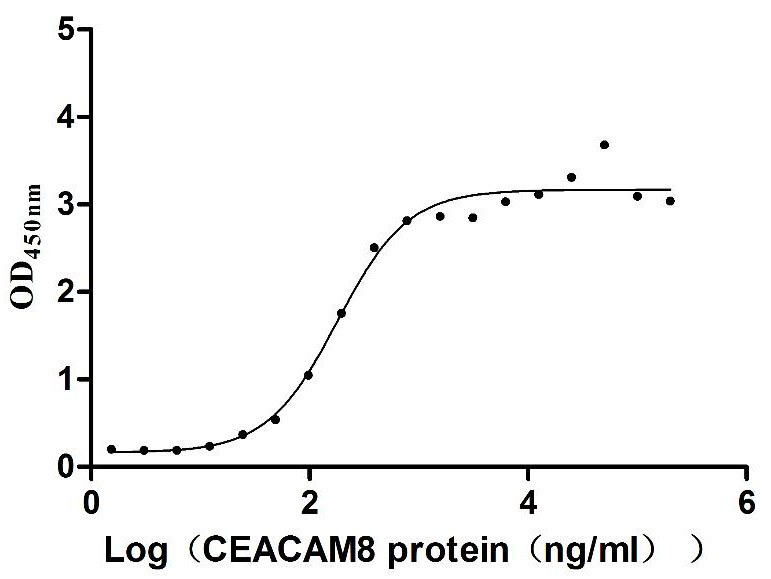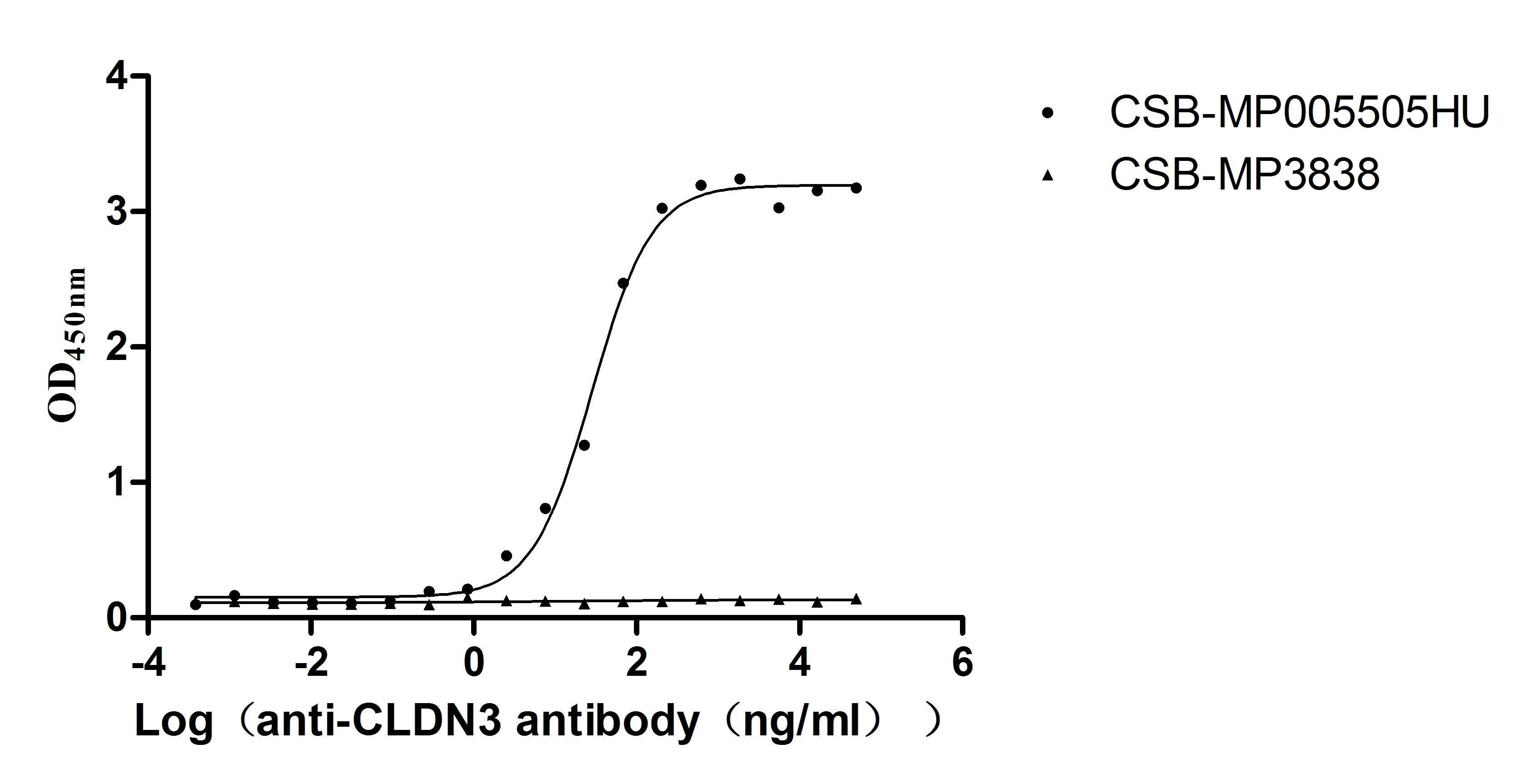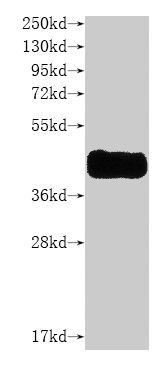Recombinant Aspergillus oryzae Probable feruloyl esterase C (faeC)
-
中文名稱:米曲霉faeC重組蛋白
-
貨號:CSB-EP648034DPA-B
-
說明書:
-
規格:
-
來源:E.coli
-
共軛:Avi-tag Biotinylated
E. coli biotin ligase (BirA) is highly specific in covalently attaching biotin to the 15 amino acid AviTag peptide. This recombinant protein was biotinylated in vivo by AviTag-BirA technology, which method is BriA catalyzes amide linkage between the biotin and the specific lysine of the AviTag.
-
其他:
產品詳情
-
純度:>85% (SDS-PAGE)
-
基因名:faeC
-
Uniprot No.:
-
別名:faeC; AO090023000158Probable feruloyl esterase C; EC 3.1.1.73; Ferulic acid esterase C
-
種屬:Aspergillus oryzae (strain ATCC 42149 / RIB 40) (Yellow koji mold)
-
蛋白長度:Full Length of Mature Protein
-
表達區域:22-270
-
氨基酸序列ANSSGCGKQ PTLVNGVHKI NDREYILKVP DNYNANKPHH LIFGLHWRGG NMNSVVNGES VEPWYGLETR AQGSAILVAP NGRNAGWANI NGEDVALIDA IIKQVEDDLC IDQSSRFATG FSWGGGMSYA LACARAKEFR AVSVLSGGVI SGCEGGHDPI AYLGIHGISD PVLPFDGGVT LANKFAANNG CQQTYVGKPG LGSHSSVQTD FKGCSRPVSF IAYDGGHDAA PLGVGNPLAP DATWKFFMAA
-
蛋白標簽:Tag?type?will?be?determined?during?the?manufacturing?process.
The tag type will be determined during production process. If you have specified tag type, please tell us and we will develop the specified tag preferentially. -
產品提供形式:Lyophilized powder
Note: We will preferentially ship the format that we have in stock, however, if you have any special requirement for the format, please remark your requirement when placing the order, we will prepare according to your demand. -
復溶:We recommend that this vial be briefly centrifuged prior to opening to bring the contents to the bottom. Please reconstitute protein in deionized sterile water to a concentration of 0.1-1.0 mg/mL.We recommend to add 5-50% of glycerol (final concentration) and aliquot for long-term storage at -20℃/-80℃. Our default final concentration of glycerol is 50%. Customers could use it as reference.
-
儲存條件:Store at -20°C/-80°C upon receipt, aliquoting is necessary for mutiple use. Avoid repeated freeze-thaw cycles.
-
保質期:The shelf life is related to many factors, storage state, buffer ingredients, storage temperature and the stability of the protein itself.
Generally, the shelf life of liquid form is 6 months at -20°C/-80°C. The shelf life of lyophilized form is 12 months at -20°C/-80°C. -
貨期:Delivery time may differ from different purchasing way or location, please kindly consult your local distributors for specific delivery time.Note: All of our proteins are default shipped with normal blue ice packs, if you request to ship with dry ice, please communicate with us in advance and extra fees will be charged.
-
注意事項:Repeated freezing and thawing is not recommended. Store working aliquots at 4°C for up to one week.
-
Datasheet :Please contact us to get it.
靶點詳情
-
功能:Involved in degradation of plant cell walls. Hydrolyzes the feruloyl-arabinose ester bond in arabinoxylans, and the feruloyl-galactose ester bond in pectin. Active against paranitrophenyl-acetate, methyl ferulate and wheat arabinoxylan.
-
亞細胞定位:Secreted.
-
蛋白家族:FaeC family
-
數據庫鏈接:
STRING: 5062.CADAORAP00007160
Most popular with customers
-
Recombinant Human T-cell antigen CD7 (CD7), partial (Active)
Express system: Mammalian cell
Species: Homo sapiens (Human)
-
Recombinant Human Neuropilin-1 (NRP1) (Active)
Express system: Mammalian cell
Species: Homo sapiens (Human)
-
Recombinant Human Poliovirus receptor (PVR) (I340M), partial (Active)
Express system: Mammalian cell
Species: Homo sapiens (Human)
-
Recombinant Mouse Tyrosine-protein kinase Mer (Mertk), partial (Active)
Express system: Mammalian cell
Species: Mus musculus (Mouse)
-
Recombinant Human Claudin-9 (CLDN9)-VLPs (Active)
Express system: Mammalian cell
Species: Homo sapiens (Human)
-
Recombinant Human Carcinoembryonic antigen-related cell adhesion molecule 6 (CEACAM6) (Active)
Express system: Mammalian cell
Species: Homo sapiens (Human)
-
Recombinant Human Claudin-3 (CLDN3)-VLPs (Active)
Express system: Mammalian cell
Species: Homo sapiens (Human)
-
Recombinant Human C-C chemokine receptor type 8 (CCR8)-VLPs (Active)
Express system: Mammalian cell
Species: Homo sapiens (Human)


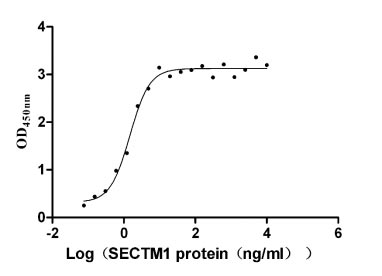
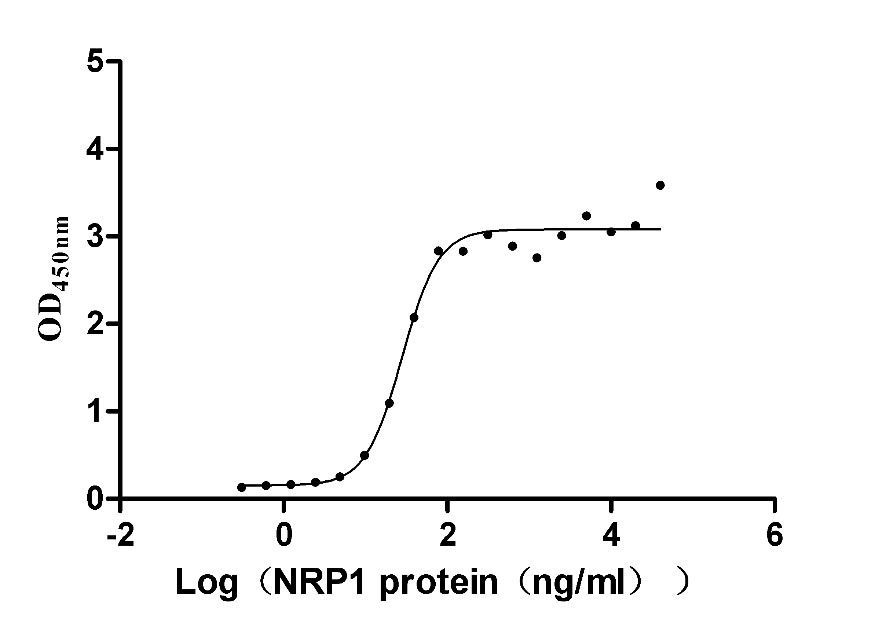
-AC1.jpg)
